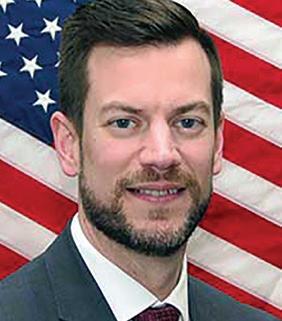Antimicrobial Resistance
Diane Shader Smith wants the world to take AMR seriously


Diane Shader Smith wants the world to take AMR seriously

While antibiotics are one of the greatest achievements in modern medicine, they are only useful if they work.
Antimicrobial resistance (AMR) occurs when germs become resistant to the antibiotics created to kill them. This makes infections harder — and sometimes impossible — to treat, resulting in longer hospital stays and even death.
The Centers for Disease Control and Prevention (CDC) estimates that AMR infections cause at least 3 million sicknesses and 35,000 deaths in the United States each year, but the true numbers are likely higher. Before the COVID-19 pandemic, significant progress had been made in the fight against AMR. According to the CDC, between 2012 and 2017, deaths from AMR fell by 18% overall.
But the COVID-19 pandemic turned everything upside down. In 2020, AMR infections and deaths rose 15% as a result of the pandemic. That number won’t go back down without efforts targeted at AMR.
Antibiotics play a critical role in treating individuals with a range of diseases — from patients with cancer who develop an infection during chemotherapy to those with an organ transplant who develop an infection as a result of immunosuppressive
therapy. Others can experience an infection as a result of complications of surgery, such as a hip or knee replacement or a cesarean section.
However, when the infection is due to drug-resistant bacteria, the number of effective antibiotics becomes limited — and so does a doctor’s ability to cure the infection. Data show that 40% of cancer patients admitted to the intensive care unit have drug-resistant infections, and infections are estimated to play a part in about half of cancer deaths.

Despite the essential role antibiotics play in modern healthcare, the development of these drugs has slowed to nearly a halt. There are not enough new antibiotics in the research and development pipeline to meet the threats of many types of bacteria that no longer respond to antibiotics.
There are many reasons bacteria can develop resistance to antibiotics, but the most important one is inappropriate
and indiscriminate use of antibiotics. Nearly 60% of hospitalized patients receive an antibiotic, but more than half of these prescriptions are inappropriate because the patient doesn’t have an infection, or the wrong antibiotic was prescribed.
There are programs that can help doctors in hospitals and other healthcare facilities determine the most effective treatment for infection and ensure antibiotics are only given when there is a clear need, which will help prevent resistance. However, many facilities don’t have these programs in place or don’t have enough staff or resources to adequately meet the standards that have been set. In 2016, CDC estimated that about 1 in 3 antibiotic prescriptions in doctors’ offices and clinics were inappropriate.
There’s hope with the bipartisan Pioneering Antibiotic Subscriptions to End Upsurging Resistance (PASTEUR) Act — a meaningful legislative solution on the horizon awaiting congres-
sional action. The PASTEUR Act would strengthen our antibiotic pipeline for years to come by changing the way the government funds the development of new antibiotics, as well as supporting effective approaches to appropriate antibiotic prescribing.
Driving research and development of antibiotics is essential to reinforcing the pipeline and ensuring patients and doctors have access to lifesaving treatments that work. Without the proper tools to prevent the spread of drug-resistant bacteria, the country’s already strained healthcare system may face yet another public health crisis. n
del Rio, M.D. President, Infectious Diseases Society of America (IDSA)



The significant burden of antimicrobial resistance (AMR) cannot be overstated. Recent estimates reflect that 4.95 million people died globally in 2019 related to an AMR infection.
AMR is the ability of harmful bacteria and other microbes to overcome the medications intended to kill them. Compared to previous global burden estimates, future projections suggest that AMR-related deaths could exceed cancer-related deaths by 2050. In the United States in 2020, the rate of AMR-associated deaths and infections increased by 15% as a result of the COVID-19 pandemic. With this trajectory, a post-antibiotic era becomes possible — surgeries, chemotherapies for cancer, and organ transplants all become increasingly dangerous or even impossible due to infection risks. Moreover, even a simple wound infection could become untreatable and deadly. Therefore, action must be taken to curtail this scenario.

The primary driver of AMR is the inappropriate use of antimicrobials, a group of drugs that also includes antibiotics. Antimicrobials may be used to presumptively treat a broad range of
infectious agents when it is unclear if an infection is present or the organism causing an infection is unknown. This is called empiric antimicrobial use. Without diagnostic tests to help establish a diagnosis for the illness, this type of antimicrobial use can be overused.
As bacteria develop AMR from inappropriate use of antimicrobials, the resistance is propagated. In addition, the spread of resistance is accelerated by regional and international travel, where people can become colonized with resistant bacteria, putting them at risk of future infections or potentially spreading the organism elsewhere. Thus, as geographic or political borders do not limit AMR, solutions must be addressed with an equitable One
Health (humans, animals, environment) approach.
To effectively track and combat AMR, the burden must first be understood. This is exceptionally challenging in settings where a lack of infrastructure prevents efficient data collection and analysis. Efforts to track rates of infections are crucial to infection prevention initiatives, which are a cornerstone of AMR mitigation and control. Recent global data suggest that while excessive antimicrobial use is a significant driver of AMR, locations that lack public health infrastructure or infection control practices are at the greatest risk of morbidity and mortality from infections caused by
drug-resistant organisms. Improving AMR surveillance at the local, regional, national, and international levels with diagnostics, data, and analytics such as artificial intelligence will be critical in the fight against AMR moving forward.
The global burden of AMR is often referred to as the “silent pandemic” because it is not as commonly talked about as other pandemics. Additionally, the impact on human health may not be immediately visualized by the public, although it is responsible for significant cost, disability, and death. Actions to curb AMR, including improved use and access to diagnostic tests, must come to the forefront of our public health efforts to protect against a future where antimicrobials are no longer effective. n
To learn more, scan the QR code or visit go.bioMerieux.com/ diagnostics-and-ams


1. O’Neill J. Review on Antimicrobial Resistance Antimicrobial Resistance: Tackling a crisis for the health and wealth of nations. London: Review on Antimicrobial Resistance; 2014. Available from: https:// amr-review.org/sites/default/files/ AMR%20Review%20Paper%20
-%20Tackling%20a%20crisis%20 for%20the%20health%20and%20 wealth%20of%20nations_1.pdf
2. COVID-19 & Antibiotic Resistance | CDC. Accessed November 10, 2022. https://www.cdc.gov/drugresistance/ covid19.html
3. Antimicrobial Resistance Collab-


orators. Global burden of bacterial antimicrobial resistance in 2019: a systematic analysis. Lancet. 2022 Feb 12;399(10325):629-655. doi: 10.1016/ S0140-6736(21)02724-0. Epub 2022 Jan 19. Erratum in: Lancet. 2022 Oct 1;400(10358):1102. PMID: 35065702; PMCID: PMC8841637.
4. The silent pandemic of antimicrobial resistance - GOV.UK. Accessed November 26, 2022. https://www. gov.uk/government/speeches/ the-silent-pandemic-of-antimicrobial-resistance.
PRN
The discovery of penicillin 94 years ago revolutionized bacterial infection treatments. However, germs adapt, and today, antimicrobial resistance is one of the most significant threats to public health worldwide.
Antimicrobial resistance (AR) is a growing global health threat. AR occurs when germs like bacteria and fungi develop the ability to defeat the drugs designed to kill them.
Prior to the COVID-19 pandemic, the United States was making steady progress in reducing healthcare-associated infections, including those caused by antimicrobial-resistant germs. Those numbers reversed in 2020, partly due to inappropriate use of antibiotics and overwhelmed healthcare systems focused on battling COVID-19.
Preventing infections and improving antibiotic and antifungal use are crucial to stemming the resistance tsunami we are facing.
Antimicrobial resistance killed at least 1.27 million people worldwide and was associated with nearly 5 million deaths in 2019. In the United States alone, The Centers for Disease Control and Prevention’s 2019 Antibiotic Resistance Threats Report estimated more than 3 million antimicrobial-resistant infections occur each year, causing 48,000 deaths.
During the first year of the COVID-19 pandemic, resistant infections and deaths increased by at least 15% compared to 2019. This significant rise represents at least 29,400 lives lost from AR commonly associated with healthcare. The overall burden of AR in 2020 was likely much higher, as the pandemic created gaps in data collected. It is a sobering thought to know that many of these infections are preventable.

We know what works to fight antimicrobial resistance: preventing infections in the first place. The Centers for Disease Control and Prevention (CDC) reported in 2019 that dedicated prevention and infection control efforts drove down deaths from antimicrobial-resistant infections by 18% overall and by nearly 30% in hospitals from 2012 through 2017 in the United States.
CDC data show these reductions continued until 2020. However, the pandemic created challenges, including stress on healthcare systems, spread of more resistant infections, increased antibiotic use, and less data and prevention actions. To turn the tide, we must focus on preventing infections and improving anti-
biotic/antifungal use wherever antibiotics are used.
You can protect yourself, your family, and loved ones, and help slow antimicrobial resistance. A few suggested steps to reduce your risk:
Keep your hands clean by handwashing or using hand sanitizer — this is one of the best ways to avoid getting sick and stop spreading germs.
Ask your healthcare provider or veterinarian about the best treatment when you, your family, or an animal is sick. Antibiotics and antifungals save lives, but they can cause side effects anytime they are used and can contribute to AR.
Stay up to date on recommended vaccines. Vaccines help prevent infections, slow resistance, and reduce antibiotic and antifungal use.
Keep cuts clean and covered until healed. Ask your healthcare provider about risks for certain infections.
Prevent sexually transmitted infections (STIs). Gonorreah, a common STI, has progressively developed resistance to the drugs designed to treat it.
And finally, make sure you are safely preparing foods.
For more information, visit cdc.gov/drugresistance/protect-yourself-family.html. n
1Keep hands clean and cuts covered until they are healed. Ask your healthcare provider about the risk of certain infections.
Stay up to date on recommended vaccines
Vaccines help prevent infections, slow resistance and reduce antibiotic and antifungal use.
3Ask your healthcare provider or veterinarian about the best treatment when your family or an animal is sick. Antibiotics and antifungals save lives, but they can cause side effects anytime they are used and can contribute to AR.
Prevent sexually transmitted infections (STIs). Gonorreah— a common STI — has progressively developed resistance to the drugs designed to treat it.
5Safely prepare food.
The overuse of antibiotics stems, in part, from uncertainty.
Procalcitonin (PCT) testing gives clinicians crucial information.

Clinicians face a major challenge: antimicrobial resistance (AMR). The overuse of antibiotics has resulted in resistant bacteria and viruses that no longer respond to medicines, and the

impact is severe — and getting worse. Drug-resistant diseases cause 700,000 deaths annually — a number predicted to grow to 10 million deaths annually by 2050 if nothing is done.
“Antimicrobial resistance is primarily driven by inappro-
priate use of antibiotics,” noted Michael R. Broyles, Pharm.D., director of medical affairs at Thermo Fisher Scientific, a scientific instrumentation company. “That’s often driven by uncertainty and erring in favor of caution.”


Informed decisions
Clinicians often find themselves working at a disadvantage when it comes to AMR and the decision to prescribe antibiotics because many symptoms can be associated with different diagnoses. This makes the question of whether the symptoms have a bacterial or non-bacterial cause a crucial one.
Serial procalcitonin (PCT) testing is a key tool in the fight against AMR. A protein found in response to bacterial infections, testing for procalcitonin offers the clinician a wealth of information.

“PCT has a very high sensitivity and specificity for bacteria with favorable kinetics,” Dr. Broyles explained. “PCT can reliably help us differentiate non-bacterial from bacterial inflammation, viral vs. bacterial infection, the severity of bacterial burden, evaluation of antimicrobial choices, and
most times the opportunity to choose variable or custom durations of therapy vs. a fixed duration.”
PCT-guided healthcare has also been shown to significantly reduce the $4.6 billion associated with drug-resistant pathogens annually. “No other biomarker provides this ability to appropriately use antibiotics, which is, by definition, antimicrobial stewardship,” Dr. Broyles added, “thus resulting in significant clinical and financial value.” n
Jeff SomersTo learn more about PCT testing, visit procalcitonin.com

After the tragic loss of her daughter, author and antimicrobial resistance (AMR) advocate Diane Shader Smith has become dedicated to raising awareness about the seriousness of antimicrobial resistance.
How can we push AMR to the forefront of global health concerns?
Despite compelling data that proves superbugs pose an urgent threat to human health, these virulent strains
of bacteria, viruses, parasites, and fungi are not capturing worldwide attention and striking the appropriate level of fear. To facilitate public understanding, we need to throw out confusing acronyms that have led to mass misunderstanding, and urge stakeholders to agree on a name.
The word “cancer” describes a large group of diseases and conveys gravitas. This model should be followed to focus global attention on the multi-faceted and catastrophic problem of AMR.
Scientific, medical, and pharma communities understand the dangers superbugs pose. It’s time to engage the public and make clear why we need to care. The lack of urgency is why AMR needs to be rebranded so people understand that bacteria, viruses, parasites, and fungi are killing many millions and the death toll is rising.
The brightest minds in healthcare are meeting in echo chambers to address the problem. We need them to break out of their silos and use effective storytellers to convey
information that stresses the severity of AMR.
What is an important message you would like to personally convey to the general public?
Superbugs are bacteria, viruses, parasites, and fungi that are resistant to treatment. Sometimes they are the primary diagnosis. Other times they are secondary to another medical condition.
A common misperception is that these antimicrobials only aff ect certain patients.
While resistance disproportionately affects the cystic fibrosis, HIV, cancer, and amputee communities among other immunocompromised patient groups, even the “very healthy” are at risk of contracting a community-based or hospital-acquired infection.
To raise global awareness, we need to put a face to the issue. And we need new and novel treatments, better diagnostics, and antibiotic stewardship.
Diane Shader Smith was the World AMR Congress 2022 Keynote Speaker. n
Experts from the World AMR Congress 2022 discuss cross-sector solutions for combating antimicrobial resistance worldwide.
What are some of the lessons learned from the COVID19 pandemic that can be applicable in overcoming the “silent pandemic” of antimicrobial resistance (AMR)?
Mark Albrecht: The surge in AMR infections during the pandemic clearly showed that antibiotics are essential medicines in responding to any public health emergency, whether it’s a natural disaster, an act of terrorism, or a disease outbreak.


What do you see as the biggest challenges facing the AMR space in 2023?
Aleks Engel: Lack of momentum on reimbursement change causing further decay in anti-microbials investments.
Gareth Morgan: We’ve been talking about AMR issues for quite a while and there is a risk that the energy and focus on
AMR may start to wane. Hence one of our top challenges is keeping AMR in the spotlight and a priority for governments globally. We need governments around the world to take action and to implement their AMR National Action Plans, particularly those that address the economic issues.
On a related note, we must do a better job raising public awareness of AMR. People are supportive of addressing AMR when they know what it is, but far too many people don’t even know what AMR stands for.
How can we better collaborate across industries, sectors, and stakeholders to overcome the challenges of AMR?
MA: The challenges of AMR can be solved only by the private and public sectors working together. What we’ve learned in BARDA’s 15-year history of partnering successfully with industry and other stakeholders is that these
relationships must be true partnerships through which experience, technical expertise, funding, and other resources from all partners are brought to the table to build robust relationships.
What would you like to highlight about your work/ your organization for this coming year?
AE: We are working on closing two new investments in Q1.
GM: Shionogi is collaborating with the Global Antibiotic Research and Development Partnership (GARDP) and Clinton Health Access Initiative (CHAI) to implement a low- and middle-income countries (LMIC) access strategy. Antibiotic access in LMICs is not an easy issue to address, and people in LMICs experience a disproportionately high burden of drug-resistant bacterial infections. These pathogens don’t need passports, so resistance that develops in a
low-income country today can easily become a global problem tomorrow.
If you could wave a magic wand, what would you like to see occur in the coming year to further combat AMR?
GM: I would like to see the PASTEUR legislation signed into law. PASTEUR would create a strong incentive for antibiotic innovation and would be such a game changer for AMR-focused antibiotics in the United States. Passing PASTEUR would set a great precedent for other countries with knock-on benefits around the world.

Do you have any predictions for the AMR space in 2023 and beyond?
AE: There is significant momentum on ESG investing and AMR needs to be more closely tied into this agenda and hopefully catch some of those tailwinds.
What is an important message you would like to personally convey to the general public?
MA: Antimicrobial resistance is an urgent global public health threat, and we all play a role in combating it. At BARDA, we’re doing everything we can to spur new antimicrobial development. If you have an innovative solution to tackle this challenging issue, we’d like to hear from you.
Any additional comments?
GM: COVID-19 has delivered a worldwide wake-up call regarding the danger of infectious diseases. AMR is just as much of a concern, and we need to carry forward the COVID-19 energy to the AMR space.
Youcanhearthesespeakers and others at the 2023 conference,takingplaceinthePennsylvania Convention Center September7-8. n
against ARGs and antimicrobial resistance worldwide.
Antimicrobial resistance (AMR) is one of the greatest threats to both human health and the systems in place to safeguard it. AMR is being amplified by the overuse and misuse of antibiotics, resulting in an increasing number of infections that are more challenging — and sometimes impossible — to treat effectively. This increases healthcare costs (due to longer hospital stays and recovery times) and negative outcomes — an article published in The Lancet estimates that nearly 5 million deaths are associated with bacterial AMR each year.
Combating this problem requires robust cooperation from all aspects of the healthcare landscape — monitoring antimicrobial resistance around the world helps to define the scope of the problem and identify ways to fight back.
Partnerships like the one between Takara Bio, a leading biotechnology company specializing in the development of life science reagents
and instruments, and Resistomap, a laboratory and analysis services company, are key to winning this battle against unnecessary infections and mortality.

Real-Time qPCR
Windi Muziasari, Ph.D., founded Resistomap after her doctoral and post-doctoral work studying antibiotic resistance genes (ARGs) alerted her to the danger AMR represents. Resistomap’s customers use the company’s services to study the impact of antibiotics on livestock, as well as the spread of ARGs in the environment. One of the most important tools Resistomap relies on in this fight against AMR is Takara Bio’s SmartChip RealTime PCR System.
Real-time quantitative polymerase chain reaction (qPCR) is widely used in laboratory settings to rapidly produce and analyze genetic segments using short synthetic fragments of DNA to produce millions or even billions of
copies of a DNA segment for study. But qPCR has traditionally been limited in terms of throughput.
The SmartChip Real-Time PCR System utilizes 5,184 simultaneous reactions on a single chip — allowing much higher throughput. This means researchers can run high-volume PCR experiments simply and effectively, while also cutting costs because the process requires lower volumes of reagents.
While the SmartChip RealTime PCR System is designed for research use, not by providers working with patients, its impact is significant.
“It is critical that we support researchers in the fight against AMR with the large-scale, flexible capabilities of the SmartChip system,” said Liz Quinn, VP of Marketing at Takara
Bio USA, Inc. “High-throughput qPCR is a powerful tool for data analysis related to a wide range of human health issues, including pathogen detection, clinical biomarkers, and antibiotic resistance. We are dedicated to enabling advancements in these areas of global concern.”
The SmartChip Real-Time PCR System benefits researchers in three key ways: speed, flexibility, and cost.
Because each chip in the SmartChip system supports 14 different sample and assay configurations, Resistomap has been able to study up to 384 genes at once and deliver data on ARGs within two weeks, vastly speeding up the collection and analysis of data that can help in the fight
This technology offers researchers incredible flexibility, and Resistomap uses this advantage to offer their customers the option to get data on any ARG they choose. That flexibility means the company can be involved in a wide range of AMR-related research, from tracking how antibiotics usage impacts dairy farms to working with wastewater management entities to determine whether AMR surveillance would be beneficial.
Muziasari also notes that the SmartChip RealTime PCR System helps make AMR research less expensive, because its cost per sample is lower than other tools.
Using fewer resources while producing accurate and precise data is crucial to keeping research costs low, which in turn allows for more work to be done in the fight against AMR. As fewer drug-resistant infections occur, this in turn will reduce overall healthcare costs. n
Jeff SomersFor more information about the global fight against AMR and how Takara Bio’s real-time PCR technology is helping, visit takarabio.com/smartchip-amr
Revolutionary technology is changing how scientists are monitoring and fighting antimicrobial resistance.
In the past and now, antibiotics have been crucial to the health and safety of the United States.
In the early months of 1944, the United States achieved a scientific feat that changed not only the course of World Word II (WWII), but human health as we know it. The government had tapped more than 20 companies to embark on a national effort aimed at mass producing penicillin, the then-experimental antibiotic that, while promising, had proven difficult to manufacture in large quantities. Battlefield infections were a lethal scourge that had claimed tens of thousands of lives during the conflict, and the Allies knew an effective treatment would be a strategic advantage.







The war-time partnership succeeded in spades. More than 2 million doses were ready by the time soldiers stormed the shores of Normandy on D-Day.
By some estimates, penicillin saved more than 300,000 lives during WWII alone.
A few months later, with the Nazi regime collapsing, the U.S. government released
penicillin for commercial distribution.
Doctors embraced the newly minted miracle drug, and cash-flush pharmaceutical companies invested huge sums of money back into antibiotic research and development. The decades that followed are often referred to as the Golden Age of Antibiotics, a period marked by the discovery of dozens of antibiotics capable of treating an array of infections.
The advent of these drugs benefitted every corner of medicine, from surgery to cancer care to labor and delivery, and extended the human lifespan like no other medication had before.
After the Golden Age But by the 1990s, the sun had set on antibiotics’ Golden Age. Drug discovery had become difficult and expensive, and the profit margins of antibiotics paled in comparison to blockbuster cholesterol or inflammation drugs. Many companies closed their antibi-
otic programs, and the pipeline has since thinned to worrisome levels. All the while, bacteria were becoming resistant to our existing antibiotics, rendering the drugs increasingly ineffective.
This paucity of innovation coupled with the relentless rise of drug-resistant “superbugs” now poses one of the greatest health security threats of our time. In 2019, antibiotic-resistant infections directly killed 1.27 million people and that number is expected to swell to 10 million by 2050, costing the global economy somewhere in the range of $100 trillion.

The challenge is huge and we are ill prepared. The World Health Organization reports that there are only 45 traditional antibiotic candidates
in the clinical pipeline — most of which will not make it through the rigors of regulatory approval.

Continuing research Nobody is immune from this threat, especially our service members. While infection control has improved significantly since WWII, battlefields remain a bonanza of bacterial resistance. Severe wounds, unsanitary conditions, supply chain challenges, and laggard diagnostics help fuel drug-resistant infections in settings of conflict.
Consider the plight of thousands of American and European soldiers who were injured
in Iraq and Afghanistan and became infected with Acinetobacter baumannii, a pernicious bacterium that can cause deadly infections. This bacteris was so pervasive among soldiers serving in the Middle East that it earned the unfortunate nickname “Iraqibacter.”


Antibiotic-resistant strains of Acinetobacter baumannii are now a menace in hospitals across the country. The United States Centers for Disease Control and Prevention, which classifies the pathogen as an “urgent threat,” reported a 78% spike in hospital-acquired cases during the first year of the COVID-19 pandemic.
A robust pipeline of antibiotics is essential to taking on the threat of drug resistance and properly preparing for what’s coming, be it in barracks overseas or a surgical suite in Bethesda. To help jumpstart the necessary level of innovation, federal legislators should take steps to incent the development of novel antibiotics and reward companies that succeed in this difficult but critical field of medicine. With the right policies in place, they might just kick off the next Golden Age of Antibiotics. n

Antibiotics save lives when used properly; however, overuse can lead to the development of antimicrobial-resistant infections. Antimicrobial resistance (AMR) associated with overuse is so serious that experts fear it could essentially return us to the pre-antibiotic era, with nothing in our arsenal to fight bacterial infections.
In 2018, the Centers for Disease Control and Prevention (CDC) referred to increasing AMR as “an existential threat to mankind.” Also according to the CDC, at least 2.8 million antibiotic-resistant infections are reported each year, and more than 35,000 people die as a result.
These alarming revelations emphasize the importance of healthcare organizations establishing antibiotic stewardship programs, which are structures and processes designed to ensure the appropriate use of antibiotics. Antibiotic stewardship plays a critical role in patient safety because preventing overuse of antibiotics reduces AMR.
The Joint Commission, which sets quality and safety standards for healthcare organizations across the country, introduced its first antibiotic stew-
ardship standards in 2017 to emphasize the importance of developing an antibiotic stewardship program. It recently updated those requirements, effective January 2023, and raised the bar for hospitals seeking to improve their antibiotic prescribing practices.
The new hospital standards align with federal regulations and recommendations from scientific and professional organizations and address key components for a successful antibiotic stewardship program. The 2023 hospital standards require hospitals to:

• Allocate financial resources for staffing and information
technology to support the program
• Appoint a qualified physician and/or pharmacist to lead the antibiotic stewardship program and defining their responsibilities
• Establish a multidisciplinary committee to provide guidance and oversight for the progra
• Implement an antibiotic stewardship program throughout the hospital to address inappropriate antibiotic use
• Evaluate adherence to evidence-based guidelines for the most common indications for antibiotic use
• Collect, analyze, and report antibiotic stewardship program
data to hospital leadership and prescribers
• Identify opportunities to improve the hospital’s antibiotic stewardship program
The Joint Commission requires hospitals to implement these antibiotic stewardship activities as part of their accreditation programs. Achieving accreditation demonstrates a healthcare facility’s commitment to continuous improvement in patient care and may fulfill federal and state regulatory requirements for some.
The Joint Commission, which accredits approximately 80% of America’s hospitals, is committed to combating antibiotic resistance by promoting antibiotic stewardship through its accreditation activities and providing tools to help healthcare organizations implement antibiotic stewardship programs in multiple healthcare settings.
In addition to publishing peer-reviewed articles and highlighting leading practices hospitals use to improve antibiotic prescribing practices, it also launched SpeakUp™ on Antibiotics, an educational campaign accessible to the public about the safe use of antibiotics and risks associated with antibiotic overuse. The SpeakUp™ campaign includes an infographic, podcast, and video, with components available in both English and Spanish.
Visit The Joint Commission’s antibiotic stewardship website for additional information about its activities and resources to improve antibiotic stewardship practices within the nation’s healthcare organizations. n
JonathanB. Perlin, M.D., Ph.D., MSHA, MACP, FACMI, President and Chief Executive Officer, The Joint Commission
The Joint Commission’s new antibiotic stewardship requirements for 2023 aim to improve antibiotic prescribing in hospitals and decrease antibiotic resistance
Bill Pullman is a famous actor, but the role he most wants to discuss is his work as spokesperson for The Antibiotic Resistance Monitoring, Analysis and Diagnostics Alliance (ARMADA), a non-profit initiative seeking to combat the growing threat of antibiotic resistance.

“My brother is an infectious disease doctor in Montana,” Pullman said. “He had encountered for the first time infections that he couldn’t cure. He said, ‘I want to help this microbiologist in Seattle.’”
So, Pullman got in touch with Evgeni Sokurenko, M.D., Ph.D., founder of ID Genomics, professor of microbiology at the University of Washington, and a member of ARMADA’s Advisory Board.
The numbers are frightening — more than 2 million antibiotic-resistant infections occur
each year, resulting in 23,000 deaths in the United States alone. It’s estimated that antibiotic-resistant bacteria will claim 300 million lives by 2050.
“When you look at solutions, many people think technology just needs to get better,” Pullman said. “But it takes 10 years and a billion dollars to come up with a new antibiotic.”
ARMADA was set up to use a global network of hospitals, physicians, veterinarians, scientists, and citizens to build a database of bacteria and their antibiotic resistance profiles, with the goal of minimizing resistance and preserving our ability to fight infections.
“ARMADA is an acronym,” Pullman said, “but it also suggests a shield of some sort, a protective thing.”
The Pullman connection Pullman’s family has a strong connection to medicine.
When you look at solutions, many people think technology just needs to get better. But it takes 10 years and a billion dollars to come up with a new antibiotic.
black sheep going into the arts,” he said with a laugh. “When you see the day-to-day values of what my brothers and sisters are doing — a nurse practitioner, a doctor, a therapist — I wonder ‘What are you doing to benefit the common good?’ So some of it comes from
having some good models, and I’m just doing what I can.”
Anyone else wanting to help can start with shopping for food labeled as using antibiotics responsibly, listening when their physician suggests monitoring an infection, and donating money to the cause.
When it comes to antibiotic-resistant infections, the worst is yet to come. The scientists at ARMADA and citizen advocates like Pullman are sounding the alarm, and we should all be listening. n
“In some ways, I’m the Jeff Somers





Sepsis is a bloodstreamlife-threatening infection.
Newborn babies are among those hardest hit.

Babies with infections must be treated with antibiotics right away.
But we are faced with a growing threat of antibiotic resistance.


Many treatments no longer work 140,000 babies are dying every year from drug-resistant infections.
The Global Antibiotic Research and Development Partnership (GARDP) is working with partners to develop and make accessible new and improved treatments for drug-resistant infections in babies and children.


